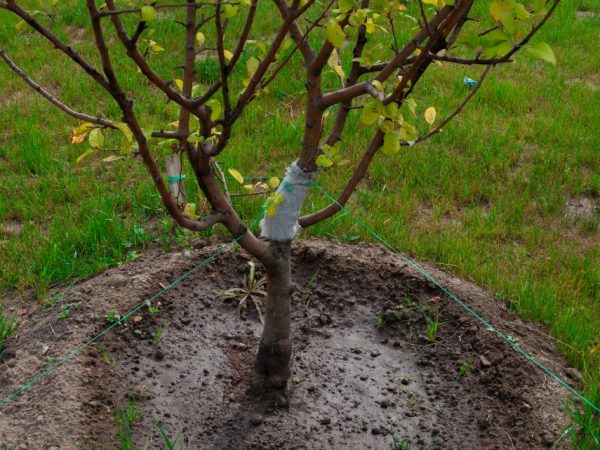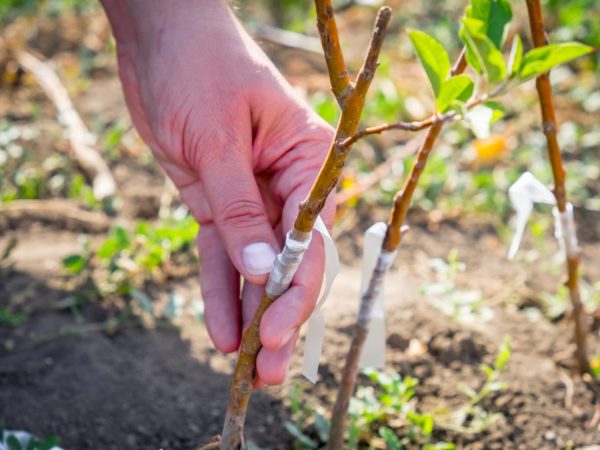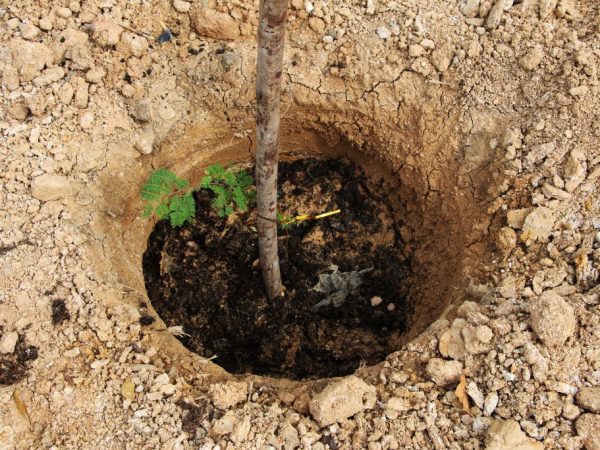Features of apple rootstocks
Most apple seedlings are the result of grafting. A stock for an apple tree is that part of a plant that is responsible for feeding a bud grafted onto it or a cutting from a fruiting tree (scion). When cultivating a horticultural culture, the choice of a rootstock variety is of great importance, because the future yield of the tree and its health depend on this.

Features of apple rootstocks
Varieties
Some varieties of apple trees cannot be grown from seeds. In these cases, grafting a bud or a cutting from a tree of the desired type will help, as a result of which a seedling with the required varietal characteristics will grow from the grafted part.
The part that is grafted to obtain a fruit-bearing tree is called the scion, and the part that is grafted onto is called the stock. The classification divides them into several types.
Seminal
A seed stock is a seedling grown from the seeds of a common apple variety. The strength of his growth and development lies in the varietal characteristics, which he transmits at the genetic level during the grafting process.
For growing seedlings, vigorous apple varieties, such as Antonovka, Borovinka, Grushovka, are often taken as a seed stock, which differ in the description of their characteristics by winter hardiness and a strong root system.
The seed processes are different:
- long period of fruiting;
- stable immunity and unpretentiousness to weather conditions - they easily tolerate both frost and drought;
- high yield.
Their disadvantages include:
- the need for a sufficient area for growing seedlings;
- susceptibility to the influence of groundwater due to a highly branched root system growing at great depths;
- the onset of fruiting only 4-7 years after planting;
- the risk of loss of the quality characteristics of the parent variety during cross-pollination with other varieties.
Clonal
Clonal (or vegetative) rootstocks of an apple tree are obtained by vegetative propagation from trees that are taken as the original planting material, rooting a cut off from them and as a result getting a new seedling.
Vegetative grafts with clonal seedlings are more often carried out for dwarf and dwarf hybrids.
The peculiarity of this stock is a fibrous root system formed by adventitious roots extending from the central trunk. This allows you to maintain the quality characteristics of the mother tree.
Clonal apple rootstocks have a number of advantages:
- the resulting horticultural crop is uniform in strength of growth and the beginning of fruiting;
- seedlings can be grown near groundwater flow points, because they have superficial root growth;
- the harvest from trees grafted onto a cloned stock is removed annually starting from the 3rd year after grafting;
- it simplifies the care of low trees, including pruning;
- ergonomic planting allows planting many young apple trees in a confined space.
The disadvantages of a cloned vaccine include:
- shortened (up to 8, maximum 15 years) fruiting period;
- susceptibility of the root system located on the soil surface to damage from frost and drought;
- it is necessary to put additional supports in order to avoid falling trees due to unstable attachment of surface roots in the soil.
Intercalary
Insertion (or incalar) combinations consist of a seedling and an intermediate insert from a weak rootstock. Cuttings 12-22 cm long are cut from the mother plant grown from seeds. They allow grafted seedlings to combine the characteristics of short stature and early maturity with high resistance in the soil.
The apple trees obtained on the incalar rootstock are not in demand among gardeners, because they are not highly resistant to temperature fluctuations and have insufficient mechanical strength.
Interstitial rootstock seedlings are almost never used. An example of apple trees obtained by such grafting is the dwarf variety Paradizka Budagovsky.
Differences between seed and clonal rootstocks

We plant the desired variety of apples
The main difference between rootstocks is the way they are obtained. Seed plants require a lot of labor from the gardener, tk. at the same time, it is necessary to go through all the stages of growing a plant, starting with pre-sowing seed treatment, ending with the subsequent care of seedlings with their gradual growth and transformation into young seedlings.
They reach full productivity by the age of 10 years, but the lifespan of a seed-grown garden is 30-40 years. The yield of apple trees obtained as a result of such grafting is limited to 15-20 tons per hectare, because part of the crown of tall trees is usually unproductive.
Seed trees have the advantage that they have gone through all stages of development with careful maintenance and are highly resistant to disease and weather changes.
Clonal ones are intended for growing horticultural crops on a large scale, because are distinguished by high yields. Trees are obtained from them of moderate height with early maturity.
Variety selection
There are many types of rootstocks, and each has its own characteristics.
Dwarf
Dwarf have a superficial root system that is weakly attached to the soil layers, so they are unstable to drought and demanding on the condition of the soil. It is recommended to grow such trees on lands where groundwater passes high enough.
Saplings on dwarf rootstock varieties grow intensively and begin to bear fruit by the third year. These include:
- M8 is the lowest of the dwarf varieties, but also the earliest. Poorly tolerates drought and easily breaks under the weight of apples and snow in winter;
- M27 - rarely found in gardens, because has very fragile wood and requires careful maintenance, has a small crown, so the yield is low;
- M9 is compatible with all varieties, therefore it is popular among gardeners, apples grow early on it, yield indicators are high, refers to long-livers (average age is about 20 years), is drought-resistant, but picky about the quality of the soil, does not grow on sandstones, clay and heavy soil;
- D1071 - the result of M9 and Anis crossed among themselves, it is distinguished by high yield and moderate height; unlike other "dwarfs", it can endure short-term drought and slight frosts without consequences;
- 62-396 and 63-396 - clonal dwarf rootstocks are the most common in central Russia, any scion increases winter hardiness, grafted on a 62-396 variety will provide fruiting already for 2-3 years after planting, and from 63-396 they get yields of 40 -50% higher than the popular M9.
Semi-dwarf
Semi-dwarf varieties are more convenient for grafting procedures and breeding garden crops. The apple trees obtained on them are less demanding for watering and can grow without supporting structures, because they are more resilient due to the branched root system.
We started grafting apple trees on semi-dwarf rootstocks with M-2, M-3, M-4, M-5 and M-7.Having poor rooting, they soon lost their popularity, giving way to new rootstock varieties.
Today, the semi-dwarf variety MM-102 is widely used - the result of M-1 and the Northern Scout crossed among themselves. Shows good compatibility with all species, planting fast-growing and high-yielding trees. It has average indicators of frost resistance, withstanding a drop in temperature to -10 ° C.
Branched roots tolerate short-term drought without consequences. However, this species “does not like” waterlogging, waterlogging and grows poorly in lowlands.
Estonian developments E-56 and E-63 showed good results in the harsh conditions of the Urals with significant changes in winter and summer temperatures and the absence of precipitation. On infertile soils, they produce trees with strong wood and good rooting, which can withstand frosts down to -17 ° C. Fruiting occurs at 4-5 years.
Medium-sized
Medium-sized ones do not differ much from semi-dwarf ones and are also the best option for vaccination. However, they are much better adapted to the Russian climate, withstanding low temperatures. They do not immediately begin to bear fruit, but they give high yields. Among them:
- MM-104 is the result of crossing M-2 with the Northern Scout, a mid-season stock on highly fertile soils can grow to the height of a vigorous apple tree, seedlings on this stock begin to bear fruit early, but this affects the amount of harvest;
- MM-106 is a high-yielding rootstock variety, which produces trees with increased frost resistance;
- A-2 is similar to MM-106, has a deep-rooted system;
- M-111 - suitable for regions of the middle zone with a fairly warm climate;
- 54-118 - the result of Russian selection, bred for the harsh Siberian climate, compatible with most varietal species, begins to bear fruit from the 3rd year, the 54-118 root system is well developed, which allows trees to gain a foothold in the ground without additional supporting structures, apple trees on it take root quickly and immediately begin active growth, showing intense fruiting in the future.
Growing

Buy and plant a seedling the easiest option
Many gardeners prefer to purchase ready-made rootstock seedlings. But you can grow an apple tree stock yourself.
From seed
For seed cultivation, they often use the seeds of the wild apple tree, which are most adapted to weather changes and are undemanding in care.
Technology:
- seeds are extracted from fruits and dried naturally;
- for hardening, the planting material is subjected to stratification (exposure to low temperature), mixing them with river sand and placing them for 3 months in a refrigerating chamber or in a basement with a temperature not exceeding 5 ° C;
- sow seeds in pre-fertilized and dug soil directly with river sand to a depth of 2-3 cm;
- after sowing, the soil is watered and mulched;
- when the second leaf appears on the seedlings, they dive, pinching the central root, leaving it no more than 4 cm in length;
- sprouts are transplanted at a distance of 15-20 cm from each other, maintaining a row spacing of 8-10 cm.
The seedlings are provided with proper care, including all the basic activities, as in the classic care of young apple trees.
From cuttings
To grow stock from cuttings in the fall, preliminary harvesting of planting material is carried out:
- a healthy tree is used as a mother tree, which has a good yield and the best characteristics of the variety;
- as cuttings, only ripe annual shoots without signs of freezing are selected, located in the outer part of the apple crown in the middle tier on the south side;
- it is better to cut cuttings from powerful shoots that have grown in length from 0.4 m or more, with a thickness of 1 cm;
- the lower cut of the cutting is made oblique and 0.5 cm lower from the location of the kidney, the upper one is made straight and slightly above the place of growth of the kidney;
- slicing is planned for the second or third decade of November - early December.
Sliced cuttings are sent for storage before the onset of heat:
- in regions with snowy winters, when 0.5-0.7 m of precipitation falls, they are stored under a layer of snow, wrapped in a covering material;
- in areas where there is little snow in winter, the workpieces are stored in a refrigerator, maintaining a temperature of 1-2 ° C.
Prepared cuttings can be rooted immediately:
- on the processes, completely remove 2 lower leaves, and the rest are cut off by ½;
- plant cuttings in a substrate of mixed in equal proportions of sand and earth, mulch the soil with peat or humus and cover with a plastic bottle or film, creating a greenhouse effect.
When warmth comes, young trees are transplanted into open ground, where they will grow for 1-2 years. This is how long it will take for them to get stronger and ready for vaccination. Caring for planted cuttings involves regular watering, loosening the soil, feeding and weeding.
Water the stock daily during the first week after planting.
The future fate of an apple tree depends on the correctly chosen rootstock - the health and life expectancy of the tree, its productivity, fruit taste and resistance to environmental influences.
For grafting, you can take a seed or clonal stock. Several of the most common varieties of domestic and foreign production, adapted for the Russian climate, are popular in horticulture. These are 54-118, M9, M8, M102, M106, 63-396, etc. You can grow the source material for grafting from seeds or by planting cuttings.

